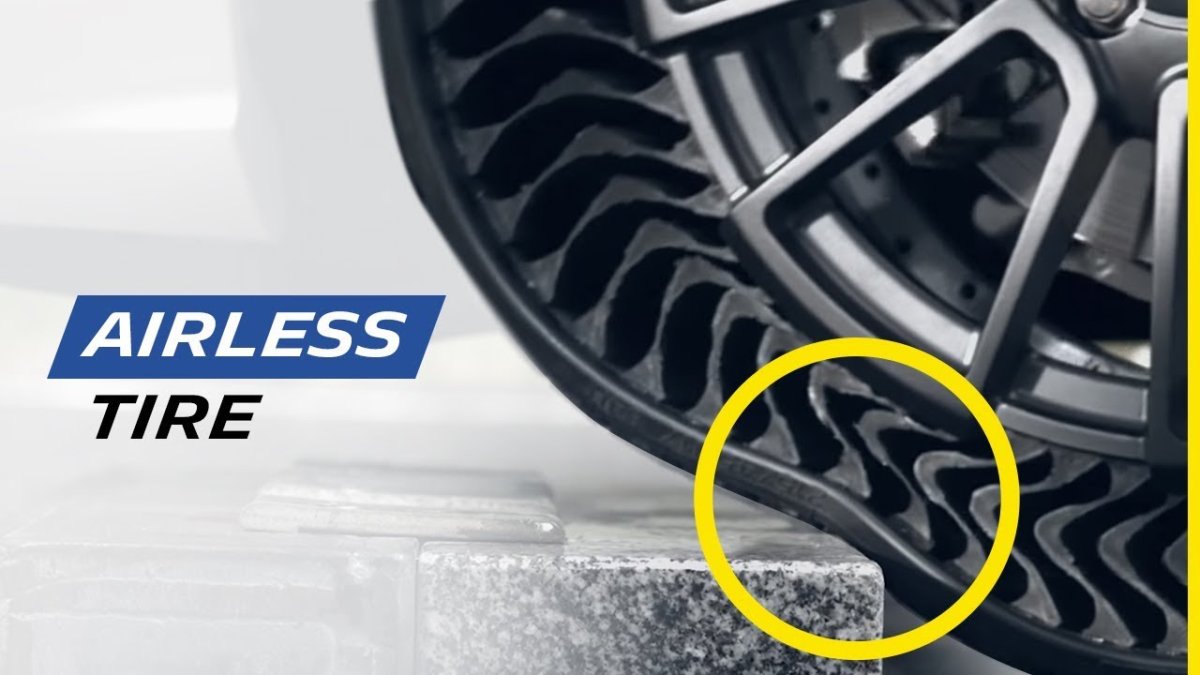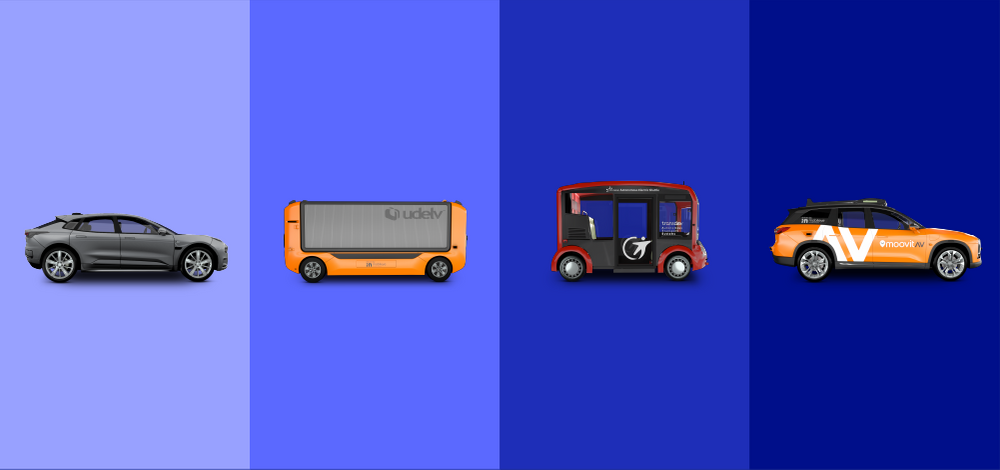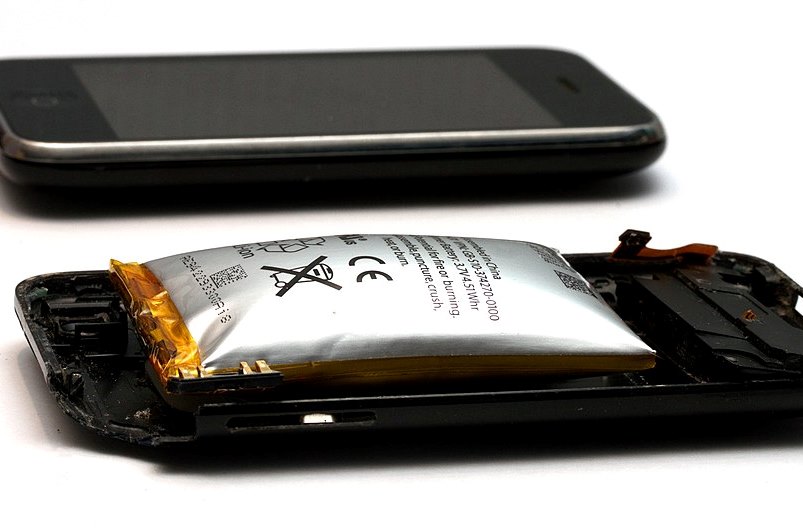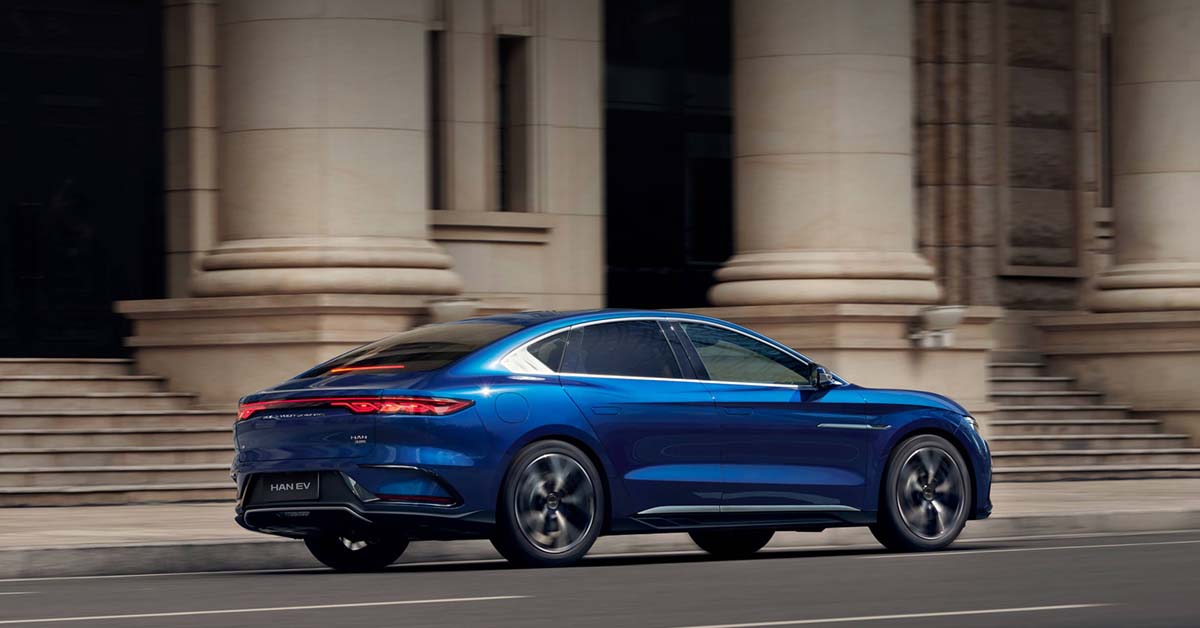Yes, it is wrong, unless you count giant dams producing hydroelectric, 66% of the total, including one of the two largest such projects, Itaipu, exceeded only by the There Gorges in China. Considering all the damage caused by those dams, it is hardly fair to call them renewable.It's a pity/crime that the rain forests are getting destroyed ... but what does that have to do with % or renewable electricity generation?
is the 90% electricity from renewables number wrong?
Preserving the Amazon would be best for all humankind, but it's destruction likely means more land for solar arrays. Seems one of the main culprits is cattle ranching? ..cheers!!
Welcome to Tesla Motors Club
Discuss Tesla's Model S, Model 3, Model X, Model Y, Cybertruck, Roadster and More.
Register
Install the app
How to install the app on iOS
You can install our site as a web app on your iOS device by utilizing the Add to Home Screen feature in Safari. Please see this thread for more details on this.
Note: This feature may not be available in some browsers.
-
Want to remove ads? Register an account and login to see fewer ads, and become a Supporting Member to remove almost all ads.
You are using an out of date browser. It may not display this or other websites correctly.
You should upgrade or use an alternative browser.
You should upgrade or use an alternative browser.
Tesla, TSLA & the Investment World: the Perpetual Investors' Roundtable
- Thread starter AudubonB
- Start date
Etna
Member
The main drawback of these type of tires is rolling resistance. The article completely avoids talking about that elephant in the room, which makes it ... not very credible.More info...

Tesla in Talks With Michelin To Test New Airless Tires
Tesla is in talks with Michelin to test airless Uptis tires on its vehicles. These puncture-proof, sustainable tires could hit the market by year's end.www.notateslaapp.com
"ptis tires are also lighter and more aerodynamically efficient than regular tires – the open-cell design notwithstanding. Interestingly enough, many would think that the open cells would cause additional drag, but initial testing on EVs from Michelin has been “described as positive”.
If the tires truly do reduce drag, or at least cause similar amounts of drag to conventional tires, the reduced weight of airless tires could improve efficiency for EVs even further. This is a tire to watch if you’re interested in increasing your own Tesla’s range.
Menegaux also mentioned that these airless tires would likely be limited to “certain types of applications”, though he didn’t mention which application or why they’d be limited. It’s possible it could be limited to certain weather conditions or types of roads. They could possibly be a good fit for autonomous vehicles, like Tesla’s upcoming Robotaxi, which is set to be revealed on 8/8."
Michelin says that their current Uptis tire has a similar rolling resistance as a runflat tire at zero-pressure. Which is of course awful.
They have been testing their Uptis tire on a Tesla Model 3 for over two years, and Tesla was not involved then and probably it not today either. I am sure their are trying to sell it to Tesla, that's as far as these "talks" could be. Or maybe for offroading the CT, at best.
Confirmation bias for anti EVs sentiment is so strong now. Studies have proven the more you hear about something even if it’s not true it becomes true to humans because in order to understand a statement or something they read they have to first think it’s true. That’s how human mind has developed over the years so when you see a brown bear or a buffalo charging you in the prairies you don’t ask yourself first if it’s true or not. You have to train your mind to not believe things and search for the underlying real facts.Just finished a trip to MN. Nearly all 30+ family members are anti EV stuff, sans one cousin who has had a Model Y for a year (who is in data science and a proponent). Absolutely incredible amount of FUD from mainstream media and I heard it all. And I waited to "hear it all" prior to dropping the bomb (well someone did it for me who was giggling) that I'm former Google, Tesla and SpaceX. I hope a few more sales happen in the next few quarters!
Hydro's are known to cause issues with native species in and around the waterways & disrupt the ecosystem, but I think all hydro is still classified as renewables? cheers!!Yes, it is wrong, unless you count giant dams producing hydroelectric, 66% of the total, including one of the two largest such projects, Itaipu, exceeded only by the There Gorges in China. Considering all the damage caused by those dams, it is hardly fair to call them renewable.
Last edited:
Knightshade
Well-Known Member
Chemistry and form factor rule the results. Tesla has a very high spec quality threshold and uses cells from most vendors who can reach it. No reports of quality differences between LG and Panasonic.
Please don't write rubbish without proof.
There's significant proof the LG 2170s are inferior to the Panasonic ones both for total capacity and charging curve though (nothing I'm aware of about quality)- that's been known- with a lot of proof posted in other threads here going back a few years since China/EU began using those LG cells (and then when the US began as well in the LR AWD). Including the actual capacity listed in public spec documents on both versions of the batteries... (roughly 82kwh Panasonic vs roughly 79 kwh for LG). This includes overseas-built Performance model 3s seeing not-quite-as-good performance results on top of the max capacity and charging items.
As I mentioned the difference isn't earthshattering but it absolutely exists.
GhostSkater
Member
Biggest difference is Panasonic uses a bit of Silicon in the anode while LG does notThere's significant proof the LG 2170s are inferior to the Panasonic ones both for total capacity and charging curve though (nothing I'm aware of about quality)- that's been known- with a lot of proof posted in other threads here going back a few years since China/EU began using those LG cells (and then when the US began as well in the LR AWD). Including the actual capacity listed in public spec documents on both versions of the batteries... (roughly 82kwh Panasonic vs roughly 79 kwh for LG). This includes overseas-built Performance model 3s seeing not-quite-as-good performance results on top of the max capacity and charging items.
As I mentioned the difference isn't earthshattering but it absolutely exists.
This leads me to believe that it might be the case going for the 4680s also, might be a patent or knowledge limitation, because I bet Tesla would love to buy cells of same performance from LG
If they don’t use some form of tabless electrode or equivalent the result might not be so good and a even bigger gap
But again, while fast charging it’s important, I don’t think the vast majority of the world travel long distances all that often to be a problem 25 minutes vs 30 minutes 10-80%
comment on the no stalks been driving CT for over a month nowBeen waiting for Tesla to do this. Not change for change's sake ( no stalks) but real progression. This is not a new concept and talked about for years. That is the problem, the other car makers talking, not doing. Would be cool to see Tesla put this into production. RT?
there is absolutely no need for stalks especially turn signals ... no need to even move hand... been driving over 40 years and i don't miss the stalks at all
and i will repeat SBW is game changer ... i find myself unable to drive my MS ...SBW is so tight and more fun to drive
I'm more leary of LG batteries, since Tesla's with LG batteries are lower range and charge speed, and Chevy LG batteries were recalled*Edit to say: Ninja'd by Knightshade.
I believe you are correct that LG's 2170's are slighly lower performing than the Panasonic 2170's.
But, if Tesla can buy and use LG cells, that adds to Tesla's supply of batteries and will allow them to produce more vehicles (or stationary storage, or whatever). That is a good thing.
However, your complaint seems to imply that Tesla is making some sort of bad decision here-- is that right? Are you trying to say that Tesla should just buy more Panasonic batteries instead? Because Tesla can't buy more Panasonic cells than Panasonic makes...and these LG cells will be IN ADDITION to what Tesla can get from other sources (like Panasonic, other suppliers, and Tesla's in-house production).
Just like the discussion on Tesla's in-house 4680's: There is no replacement of one cell supply with another here...this is an ADDITIONAL supply. Tesla has frequently said that they will buy and use any and all qualified batteries from suppliers.
Nothing in this story says or implies Tesla is rejecting Panasonic in favor of LG or anything like that.
Tesla still buys and uses all the Panasonic 18650's they get from Japan, and all the Panasonic 2170's that come from Giga Nevada, and Tesla will likely buy and use all Panasonic 4680's whenever Panasonic gets their factory for those built and running. Whatever cells Tesla buys from LG will be IN ADDITION to Panasonic cells, and IN ADDITION to Tesla's in-house cells, and IN ADDITION to whatever other supplier cells Tesla can adapt and make use of.
It looks like Ford is probably using Mobileye based on previous press releases and suchHe added it would likely only work in clear weather as well-
That doesn't sound like Tesla-licensed FSD at all
That sounds like a more expensive, more proprietary, more limited in intent and scope, solution they still haven't figured out how to make cost effective yet.
It's not like there aren't existing L3 and L4 solutions available elsewhere- they're just not economical to scale.

CES: Top Automakers Double-Down on Mobileye | Mobileye News
Volkswagen Group applies mapping tech to ADAS, while Ford and Zeekr announce new Mobileye-based production programs.
The recalled LG batteries used by Chevy, and Hyundai/Kia/Jaguar/etc., were all pouch cells. (Elon has specially said pouch cells should not be used in EVs because of the risks.) The LG batteries Tesla is using are 2170 can cells. (Which are much less likely to have the same kind of physical manufacturing issues.)I'm more leary of LG batteries, since Tesla's with LG batteries are lower range and charge speed, and Chevy LG batteries were recalled
GhostSkater
Member
The recalled LG batteries used by Chevy, and Hyundai/Kia/Jaguar/etc., were all pouch cells. (Elon has specially said pouch cells should not be used in EVs because of the risks.) The LG batteries Tesla is using are 2170 can cells. (Which are much less likely to have the same kind of physical manufacturing issues.)
Not that true anymore, BYD Blade on Model Y RWD is a pouch cells, but LFP, which makes it way more save and a good candidate for that format
Other than that CATL ones Tesla use are prismatic, which is a middle of the road format, but also fine with LFP
Are you sure about that? Everything I have read said that the BYD Blade cells are prismatic.BYD Blade on Model Y RWD is a pouch cells,

BYD Blade prismatic battery cell specs and possibilities
Large battery cells⦠why now? Simpler battery packs made with fewer and larger battery cells werenât possible with compromised platforms like MQB, however in skateboard platforms like MEB - specially made for electric cars -, they are not only possible, they are what makes sense. If youâre...
 pushevs.com
pushevs.com

Pouch Cell Demand Falls as BYD Moves On - News about Energy Storage, Batteries, Climate Change and the Environment
There’s a sudden drop in pouch cell demand, as BYD shifts production to prismatic. Why is it doing so. Are prismatic battery cells better?
China’s electric vehicle maker BYD is pulling out of pouch cells, due to ‘potential durability issues and risk of leaks’ according to Reuters. The Asian electric vehicle giant is currently converting its two plants at its Shaanxi and Zhejiang sites to build prismatic cells.
However, the third BYD factory at Qinghai may continue making pouch cells to minimize disruption to hybrid vehicle production. By 2025, though, the company should have fully converted across to its blade battery design.
The pictures on the BYD site seem to confirm that:

BYD’s revolutionary Blade Battery: all you need to know
BYD's blade battery is revolutionary in several ways. Find out why and what benefits this innovation offers.
That's a pretty startling suggestion. A potential solar power upside to the deforestation of the Amazon basin?It's a pity/crime that the rain forests are getting destroyed ... but what does that have to do with % or renewable electricity generation?
is the 90% electricity from renewables number wrong?
Preserving the Amazon would be best for all humankind, but it's destruction likely means more land for solar arrays. Seems one of the main culprits is cattle ranching? ..cheers!!
There's hardly a shortage of open unforested areaa in the world for solar arrays. The loss of the Amazon rainforest meanwhile is a catastrophe ... at the the top of the list of the secondary man-made causes of climate change, after the main cause, greenhouse gas emission.... which the loss of forest exacerbates.
In a rational world, a large geopolitical alliance would recognize the threat it poses to humanity and force an end to it by whatever means required.
None of this even goes into the unknowable consequences of the loss of species there.
Last edited:
Toyota's giant new US battery plant meanwhile, which will start prodcutiuon in a few months, is set up for pouch batteries. It's surely convertible to other technologies but not quickly.Are you sure about that? Everything I have read said that the BYD Blade cells are prismatic.

BYD Blade prismatic battery cell specs and possibilities
Large battery cells⦠why now? Simpler battery packs made with fewer and larger battery cells werenât possible with compromised platforms like MQB, however in skateboard platforms like MEB - specially made for electric cars -, they are not only possible, they are what makes sense. If youâre...pushevs.com

Pouch Cell Demand Falls as BYD Moves On - News about Energy Storage, Batteries, Climate Change and the Environment
There’s a sudden drop in pouch cell demand, as BYD shifts production to prismatic. Why is it doing so. Are prismatic battery cells better?blog.upsbatterycenter.com
The pictures on the BYD site seem to confirm that:

BYD’s revolutionary Blade Battery: all you need to know
BYD's blade battery is revolutionary in several ways. Find out why and what benefits this innovation offers.www.byd.com
This is similar to the rolling resistance of these tires in the 1970s. 6% worse than bias-ply tires as I recall. And all that rolling resistance translates to heat. Not good for a tire.The main drawback of these type of tires is rolling resistance. The article completely avoids talking about that elephant in the room, which makes it ... not very credible.
Michelin says that their current Uptis tire has a similar rolling resistance as a runflat tire at zero-pressure. Which is of course awful.
Sorry was not a suggestion, just cause and effect. More de-forested land, mean more land available - some of which might be used for solar.That's a pretty startling suggestion. A potential solar power upside to the deforestation of the Amazon basin?
There's hardly a shortage of open unforested areaa in the world for solar arrays. The loss of the Amazon rainforest meanwhile is a catastrophe ... at the the top of the list f secondary man-made causes of climate change, after the main cause, greenhouse gas emission, which the loss of forest exacerbates.
In a rational world, a large geoploitical alliance would recognize the threat it poses to humanity and force an end to it by whatever means required.
Amazon should be protected.
And at this point -- at least where I drive -- it is starting to look like a solution in search of a problem. I have not had a flat in more than a decade in the East. Though Colorado and Utah have generated one each in the past 15 years.This is similar to the rolling resistance of these tires in the 1970s. 6% worse than bias-ply tires as I recall. And all that rolling resistance translates to heat. Not good for a tire.
Dude, the model 3 with LG 2170s charges slower and has less range. Look it up for yourself before you call me a liar.Chemistry and form factor rule the results. Tesla has a very high spec quality threshold and uses cells from most vendors who can reach it. No reports of quality differences between LG and Panasonic.
Please don't write rubbish without proof.
The idea is to reduce lawsuits to the tire company. Because these tires require no user maintenance, the lawyers have one less thing to use as an argument.And at this point -- at least where I drive -- it is starting to look like a solution in search of a problem. I have not had a flat in more than a decade in the East. Though Colorado and Utah have generated one each in the past 15 years.
MountainRatMat
Member
Isn't that a chemistry difference and not a quality difference?Dude, the model 3 with LG 2170s charges slower and has less range. Look it up for yourself before you call me a liar.
...or do two different standard range Model 3's have different ranges and charge speeds?
Similar threads
- Locked
- Replies
- 0
- Views
- 4K
- Locked
- Replies
- 0
- Views
- 6K
- Locked
- Replies
- 11
- Views
- 11K
- Replies
- 6
- Views
- 5K
- Locked
- Poll
- Replies
- 1
- Views
- 12K


